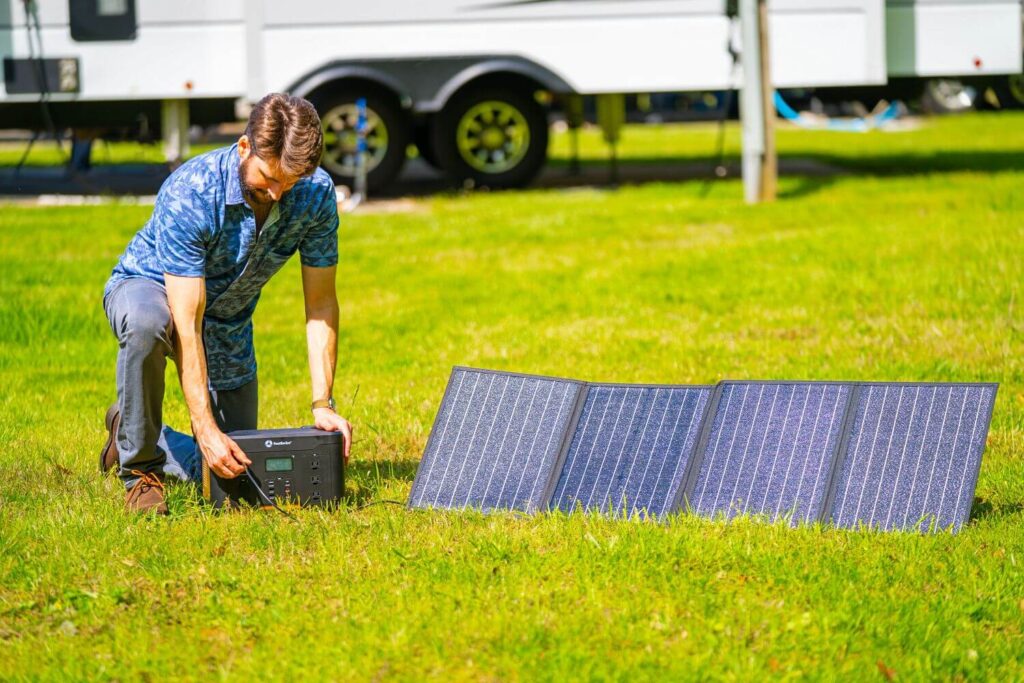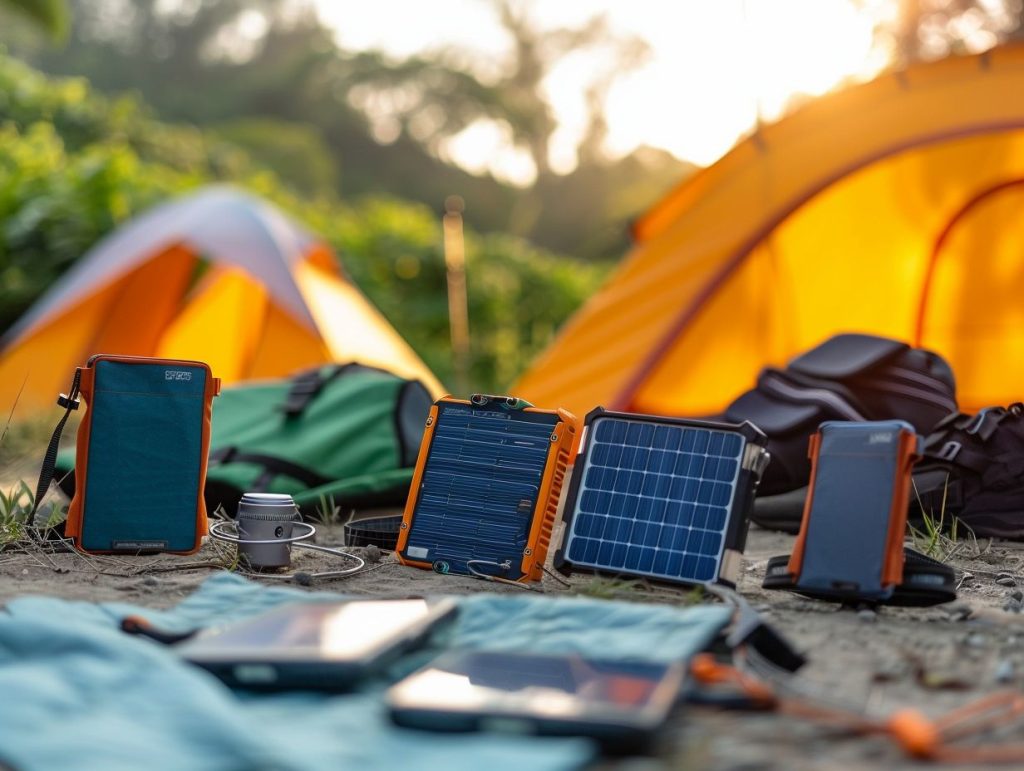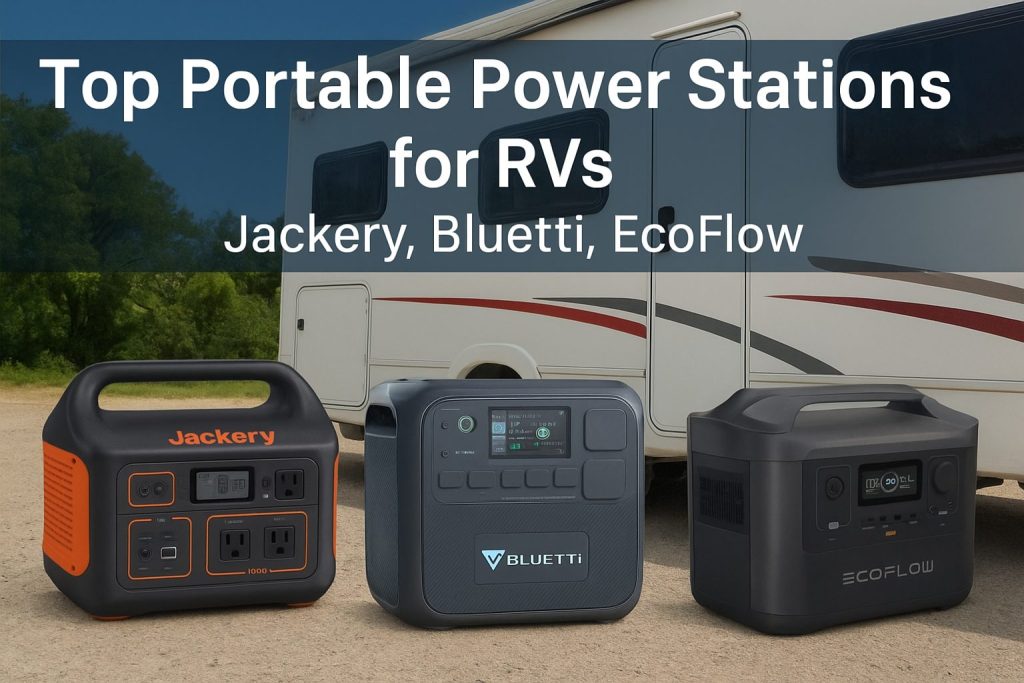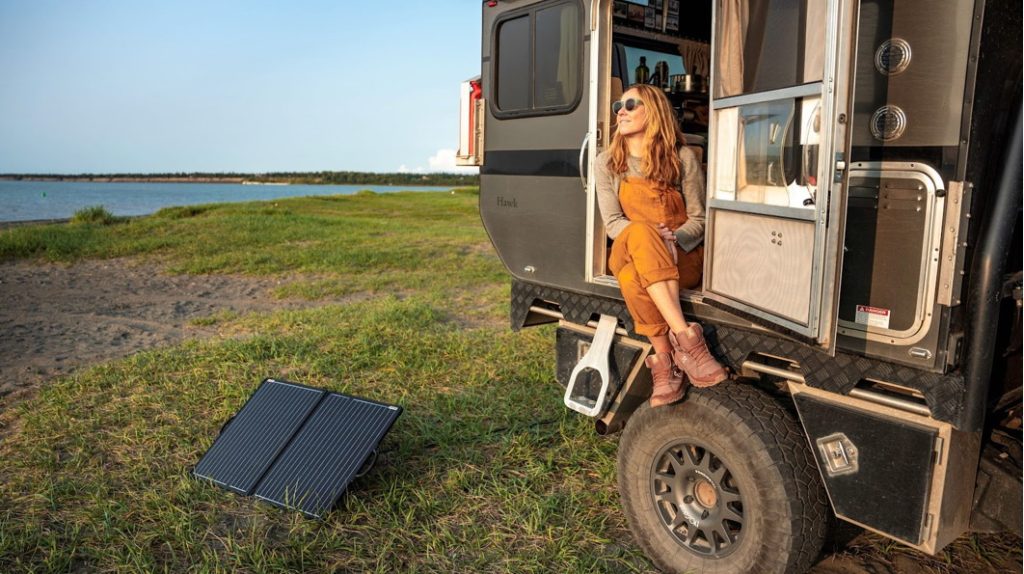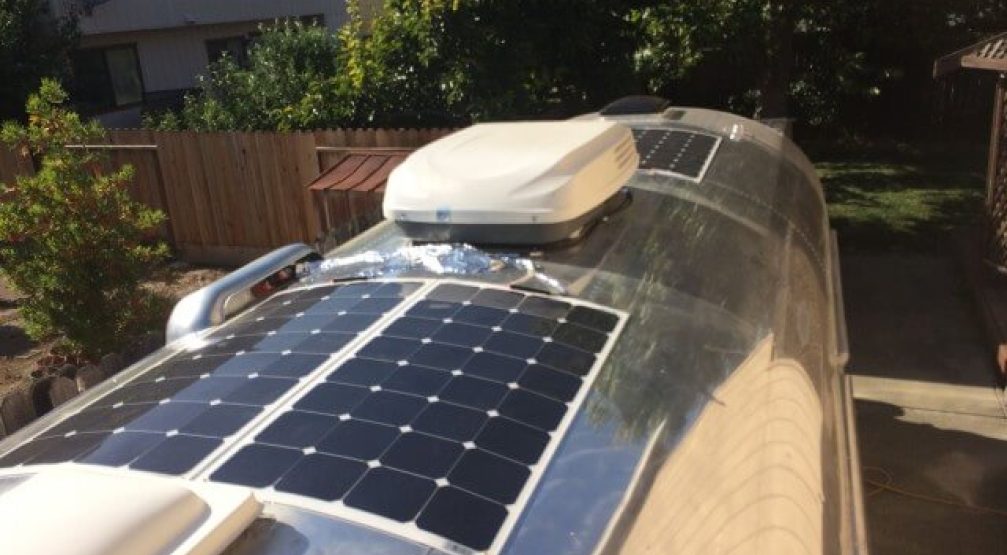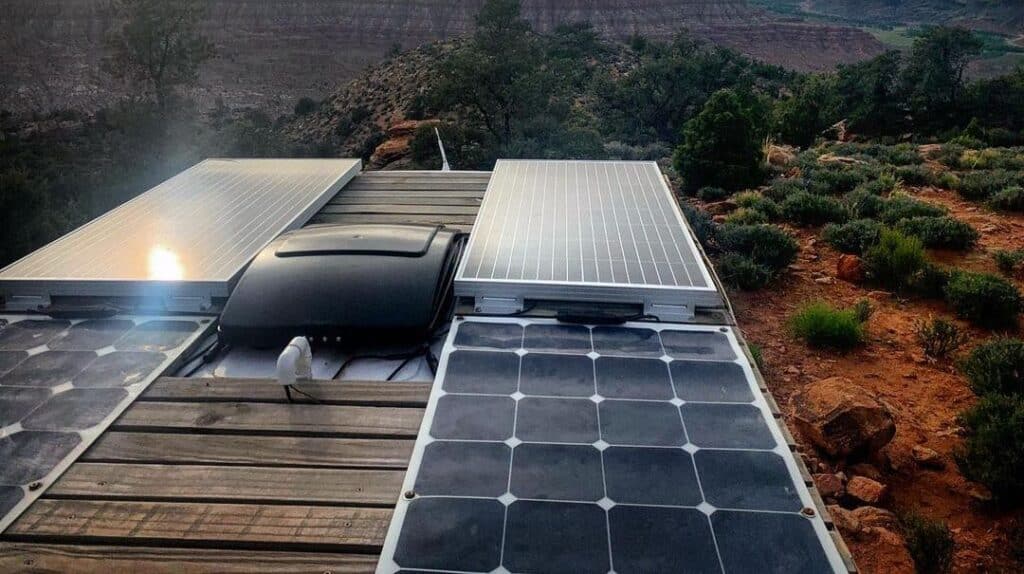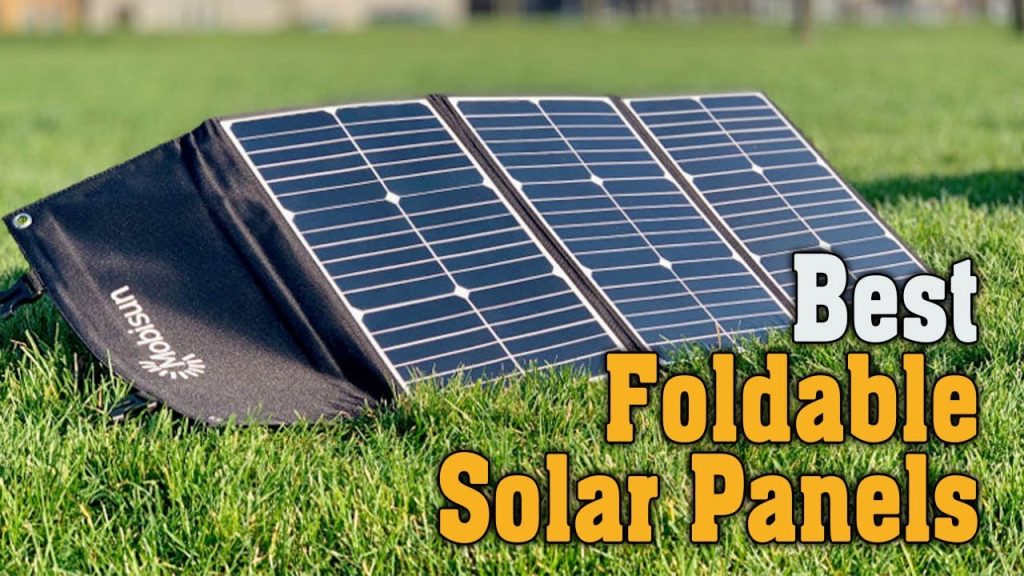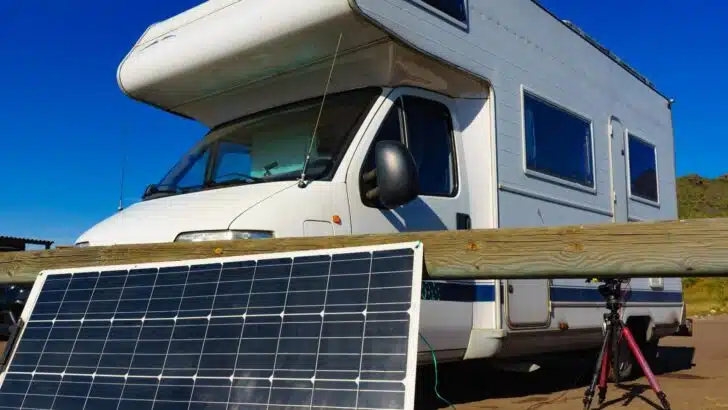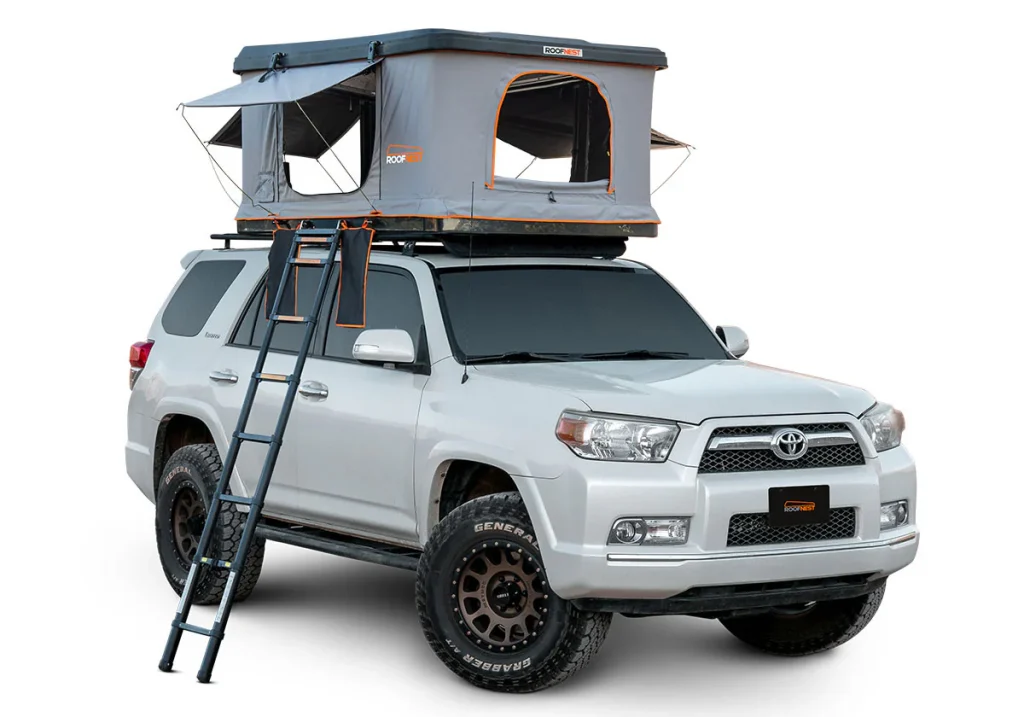Overlanding is the ultimate adventure—roaming off-grid, conquering rugged terrain, and embracing the freedom of the open road. But while escaping civilization is exhilarating, staying completely disconnected isn’t always practical. Modern overlanders rely on essential electronics like refrigerators, GPS devices, lighting, and communication tools—all of which require reliable portable power for overlanding.
That’s where portable power stations come in. These compact, battery-powered units provide clean, silent energy without the noise, fumes, or maintenance of traditional gas generators. Whether you’re camping in the desert, traversing mountain trails, or setting up a basecamp, a portable power station ensures you stay powered up without sacrificing mobility or sustainability.
In this guide, we’ll explore how portable power stations work, what to look for when buying one, and a handpicked selection of the best models for overlanders.
What Is a Portable Power Station?
A portable power station (also known as a solar generator) is a rechargeable battery pack designed to provide electricity for off-grid use. Unlike gas-powered generators, these devices store energy in high-capacity lithium-ion or LiFePO4 batteries and deliver it through multiple output ports, including AC outlets, USB ports, and DC carports.
Key Characteristics:
-
Silent Operation – No noisy engines, making them ideal for campsites.
-
Zero Emissions – Eco-friendly, with no gasoline or fumes.
-
Portable Design – Compact and lightweight for easy transport.
-
Multiple Charging Options – Recharge via solar panels, wall outlets, or car chargers.
-
Versatile Power Outputs – Run everything from smartphones to mini-fridges.
Portable power stations bridge the gap between convenience and sustainability, making them a must-have for overlanders who need reliable power without the drawbacks of traditional generators.
How Does a Portable Power Station Work?
A portable power station is essentially a large, smart battery pack with built-in power management. Here’s how it works:
1. Energy Storage (Battery Core)
-
The power station stores electricity in high-capacity lithium-ion (Li-ion) or lithium iron phosphate (LiFePO4) batteries.
-
LiFePO4 batteries are more durable and heat-resistant, making them ideal for overlanding.
2. Charging the Power Station
Power stations can be recharged in multiple ways:
-
AC Wall Outlet (Fastest method, typically 4-8 hours for a full charge)
-
Solar Panels (Eco-friendly off-grid charging, ideal for overlanding)
-
Car Charger (12V/24V input while driving)
-
Gas Generator (Backup option in emergencies)
3. Power Inversion & Output
-
The inverter converts stored DC power into AC power (for standard household devices).
-
Built-in voltage regulators ensure stable power delivery to sensitive electronics.
-
Output ports include:
-
AC outlets (for laptops, blenders, CPAP machines)
-
USB-A/USB-C (phones, tablets, cameras)
-
12V DC (carport) (coolers, air compressors)
-
Wireless charging pads (on some models)
-
4. Battery Management System (BMS)
-
Protects against overcharging, overheating, and short circuits.
-
Extends battery lifespan by preventing deep discharges.
What Can You Power with a Portable Power Station?
Portable power stations can run a wide range of devices, making them essential for overlanding. Here’s what you can expect to power, depending on capacity:
Small Power Stations (300Wh–500Wh)
-
Smartphones & tablets (10+ charges)
-
LED camp lights (30+ hours)
-
Portable fans (8–12 hours)
-
Drones & cameras (multiple charges)
-
Small coolers (4–6 hours)
Mid-Size Power Stations (500Wh–1000Wh)
-
Mini-fridges (12–24 hours)
-
Laptops (5–10 charges)
-
CPAP machines (1–2 nights)
-
Electric blankets (overnight use)
-
Coffee makers (5–10 brews)
Large Power Stations (1000Wh+)
-
Full-size refrigerators (8–12 hours)
-
Power tools (drills, saws)
-
Induction cooktops (limited use)
-
Televisions & projectors (movie nights)
-
Emergency medical devices
Key Considerations:
-
Wattage Limits: Check the power station’s max output (e.g., 1500W for heavy appliances).
-
Battery Efficiency: LiFePO4 models last longer in extreme temperatures.
-
Solar Compatibility: For extended off-grid trips, pair with solar panels.
Gas-Powered Generators vs. Rechargeable Power Stations: Which is Best for Overlanding?
When it comes to off-grid power, overlanders typically choose between traditional gas generators and modern rechargeable power stations. Each has pros and cons—let’s break them down.
1. Noise Level
✅ Power Station: Virtually silent (0–30 dB), ideal for campsites and wildlife areas.
❌ Gas Generator: Loud (50–80 dB), can disturb peace and attract unwanted attention.
2. Fuel & Emissions
✅ Power Station: Zero emissions, runs on stored electricity (solar/wall/car charging).
❌ Gas Generator: Produces fumes (CO2, carbon monoxide), requires gasoline/diesel.
3. Maintenance & Durability
✅ Power Station: No engine maintenance, fewer moving parts, longer lifespan (LiFePO4: 3,000+ cycles).
❌ Gas Generator: Needs oil changes, spark plug replacements, and fuel stabilizers.
4. Portability
✅ Power Station: Lightweight (10–50 lbs), compact, easy to transport.
❌ Gas Generator: Bulky (50–150+ lbs), difficult to move around.
5. Power Output & Runtime
✅ Gas Generator: Higher peak wattage (3,000W+), unlimited runtime with fuel refills.
❌ Power Station: Limited by battery capacity (typically 300W–2,000W), requires recharging.
6. Cost Comparison
-
Entry-Level Gas Generator: $300–$600 (but ongoing fuel costs).
-
Mid-Range Power Station: $500–$1,500 (higher upfront, no fuel expenses).
Best Use Cases
| Scenario | Gas Generator | Power Station |
|---|---|---|
| Long-term basecamp | ✔️ Better for high-power needs | ❌ Limited by battery |
| Stealth camping | ❌ Too noisy | ✔️ Silent operation |
| Emergency backup | ✔️ Reliable if fuel is available | ✔️ Instant power, no fumes |
| Solar compatibility | ❌ Not solar-friendly | ✔️ Works with solar panels |
Final Verdict
-
Choose a Gas Generator If: You need high-wattage, continuous power and don’t mind noise/fumes.
-
Choose a Power Station If: You prioritize clean, quiet, low-maintenance power for typical overlanding needs.
What Features Should I Consider When Choosing Overland Portable Power Stations?
Selecting the right portable power station for overlanding requires careful consideration of several key factors. Here’s what to evaluate before making your purchase:
1. Size and Weight
-
Compactness matters for vehicle space optimization
-
Weight affects portability (ideal range: 15-40 lbs for most overlanding setups)
-
Consider your vehicle’s payload capacity and storage space
2. Battery Type
| Battery Type | Pros | Cons | Best For |
|---|---|---|---|
| Li-ion | Lighter, more compact | Shorter lifespan (500-1,000 cycles) | Short trips, weight-conscious users |
| LiFePO4 | 3,000+ cycles, more heat-resistant | Heavier, more expensive | Frequent/long-term overlanders |
3. Battery Capacity (Watt-hours)
-
300-500Wh: Weekend trips, small devices
-
1,000-1,500Wh: Week-long expeditions, fridges
-
2,000Wh+: Basecamp setups, high-power needs
-
Pro Tip: Calculate your daily power needs and add 20% buffer
4. Charging Options and Ports
Essential ports to look for:
-
AC outlets (pure sine wave preferred)
-
USB-C PD (60W+ for fast charging)
-
12V carport (for coolers/air compressors)
-
Wireless charging pad (convenience bonus)
5. Different Ways to Recharge
Prioritize multiple charging methods:
-
Solar input (must-have for off-grid)
-
AC wall charging (fastest method)
-
12V car charging (while driving)
-
Dual/triple charging (solar+AC simultaneously)
6. Portability Features
-
Built-in handles for easy carrying
-
Stackable design for space efficiency
-
Weather resistance (IP rating if possible)
-
Mounting options for vehicle installation
7. Online Reviews and Reputation
What to research:
-
Real-world performance in overlanding conditions
-
Customer service responsiveness
-
Warranty coverage (3+ years ideal)
-
Common failure points from user reports
Bonus Considerations
-
Expandability (ability to add extra batteries)
-
App connectivity for remote monitoring
-
Pass-through charging (use while charging)
-
Low-temperature performance (for winter camping)
Pro Tip: Create a spreadsheet comparing your top 3 options across these categories to make an informed decision.
List of Popular Portable Power Stations for Overlanding
Here’s an in-depth look at the best portable power stations available today, with detailed specifications, key features, and ideal use cases for overlanders.
LiPower Mars-1000 Pro
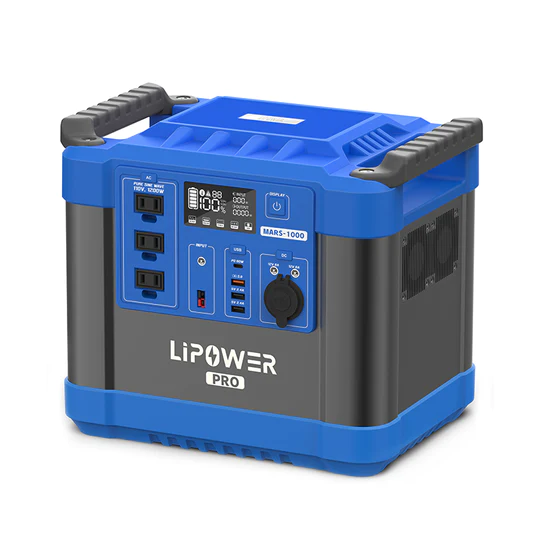
Best For: Overlanders needing reliable power with fast solar charging
Technical Specifications:
-
Capacity: 999Wh (expandable to 2,000Wh)
-
Battery Type: LiFePO4 (3,500+ cycles)
-
Output: 1,000W continuous (2,000W surge)
-
Weight: 24.3 lbs (11 kg)
-
Solar Input: 500W max
Key Features:
-
Military-Grade Durability: IP65 waterproof rating and shock-resistant casing
-
Ultra-Fast Charging: 0-80% in just 45 minutes via AC
-
True Off-Grid Performance: Operates in -20°C to 60°C temperatures
-
Smart App Control: Bluetooth/Wi-Fi connectivity for remote monitoring
-
Modular Design: Optional battery packs for extended capacity
Unique Advantages:
-
Integrated MPPT solar controller for optimal off-grid charging
-
Silent operation with <25dB noise level
-
Dual 100W PD USB-C ports for fast device charging
Overlanding Benefits:
-
Powers 12V fridge for 18-24 hours
-
Can run a 800W coffee maker
-
Handles power tools for vehicle repairs
EcoFlow Delta 2
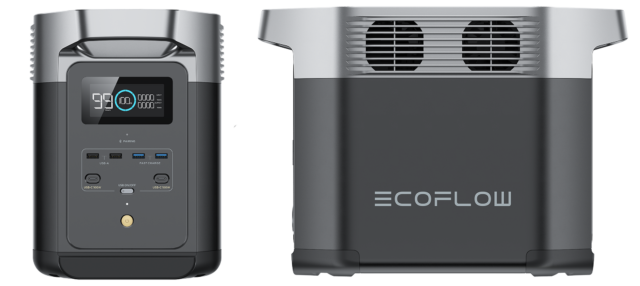
Best For: Tech-savvy overlanders wanting smart features
Technical Specifications:
-
Capacity: 1,024Wh (expandable to 3,048Wh)
-
Battery Type: LFP (3,000+ cycles)
-
Output: 1,800W (X-Boost to 2,400W)
-
Weight: 27 lbs (12 kg)
-
Solar Input: 500W max
Key Features:
-
X-Stream Charging: 0-80% in 50 minutes
-
Smart Ecosystem: Works with EcoFlow solar panels and accessories
-
UPS Function: <20ms switchover for sensitive electronics
-
Dual-Charging: AC+Solar simultaneously
-
App-Controlled: Real-time power monitoring
Performance Highlights:
-
Runs a 120W fridge for 8-10 hours
-
Charges via 12V car outlet at 100W
-
Expandable with extra batteries
Dometic PLB40
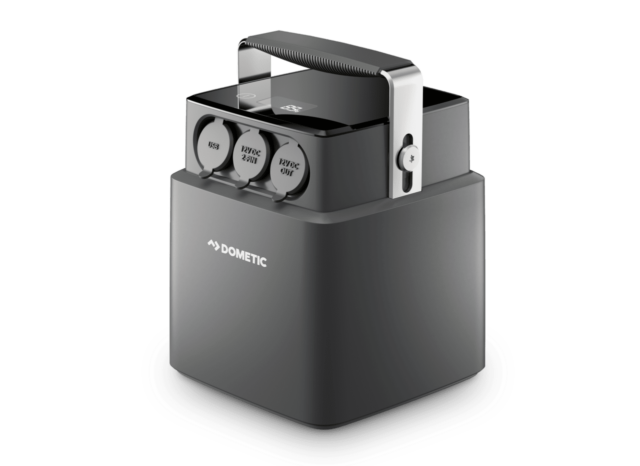
Best For: Minimalist overlanders prioritizing space efficiency
Technical Specifications:
-
Capacity: 512Wh (40Ah)
-
Battery Type: Lithium
-
Output: 600W continuous
-
Weight: 13.9 lbs (6.3 kg)
-
Solar Input: 160W max
Key Features:
-
Ultra-Compact: Fits behind vehicle seats
-
Integrated Power Distribution: Built-in fuse box
-
Dometic Ecosystem: Optimized for their coolers
-
Vehicle Integration: Hardwiring capability
-
Battery Monitoring: LED display with remaining runtime
Jackery Explorer 1500 Pro
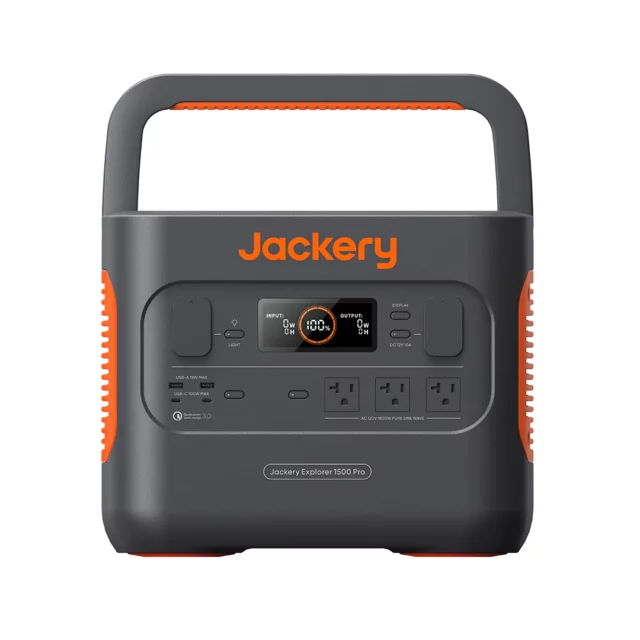
Best For: First-time power station buyers
Technical Specifications:
-
Capacity: 1,512Wh
-
Battery Type: Li-NMC
-
Output: 1,800W continuous
-
Weight: 37.4 lbs (17 kg)
-
Solar Input: 600W max
Key Features:
-
Industry-Leading Warranty: 3+2 years
-
Quiet Operation: <46dB
-
Durable Construction: Reinforced corners
-
Easy Monitoring: Informative LCD screen
-
Reliable Performance: Established brand reputation
Wagan Lithium Cube 1200
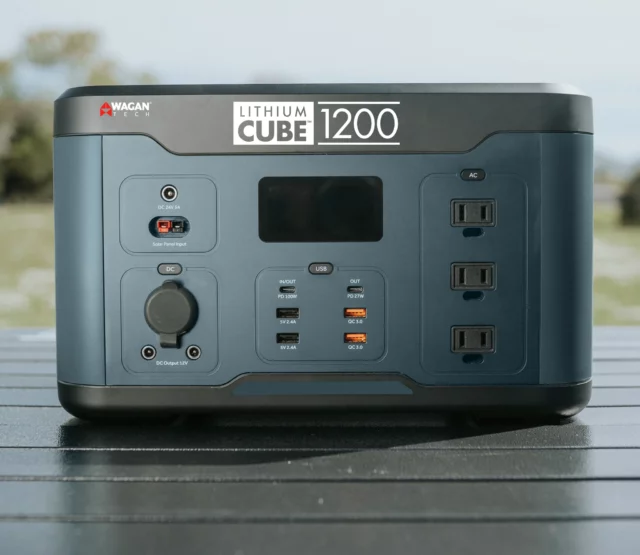
Best For: Budget-conscious overlanders
Technical Specifications:
-
Capacity: 1,152Wh
-
Battery Type: LiFePO4
-
Output: 1,200W
-
Weight: 30 lbs (13.6 kg)
-
Solar Input: 400W max
Key Features:
-
Value Pricing: More affordable than competitors
-
Durable Housing: Steel frame construction
-
Multiple Outputs: 8 ports including RV outlet
-
Fast Charging: 5-6 hour AC recharge
-
Good Customer Support: US-based service
Renogy Portable Power Station 1000
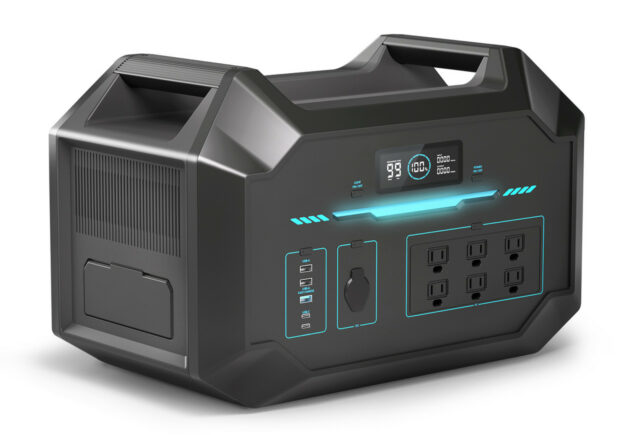
Best For: Solar-focused overlanders
Technical Specifications:
-
Capacity: 998Wh
-
Battery Type: LiFePO4
-
Output: 1,000W
-
Weight: 22 lbs (10 kg)
-
Solar Input: 600W max
Key Features:
-
Solar-Ready: Includes MC4 connectors
-
Lightweight Design: Easy to transport
-
Pure Sine Wave: Clean power for sensitive devices
-
Expandable: Works with Renogy solar systems
-
Good Ventilation: Prevents overheating
Bluetti AC60
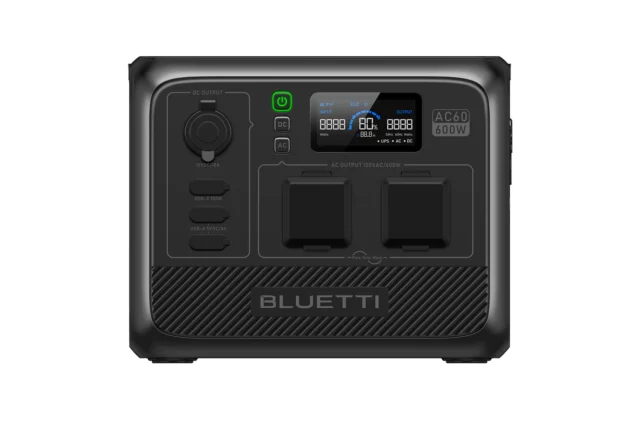
Best For: Four-season overlanders
Technical Specifications:
-
Capacity: 403Wh (expandable to 2,015Wh)
-
Battery Type: LiFePO4
-
Output: 600W
-
Weight: 20.5 lbs (9.3 kg)
-
Solar Input: 500W max
Key Features:
-
Weatherproof: IP65 rating
-
Wide Temperature Range: -20°C to 60°C
-
Compact Power: Small but mighty
-
Fast Charging: 1.5 hours to full
-
Battery Expansion: Flexible configuration
Anker Solix F2000
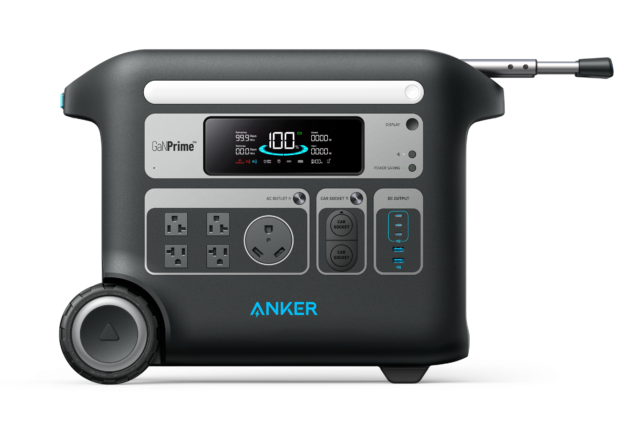
Best For: High-tech overlanders
Technical Specifications:
-
Capacity: 2,048Wh
-
Battery Type: LiFePO4
-
Output: 2,400W
-
Weight: 43.9 lbs (19.9 kg)
-
Solar Input: 1,000W max
Key Features:
-
Anker Reliability: Premium build quality
-
Ultra-Fast Charging: 1.5 hours to full
-
Smart App: Advanced power management
-
Expandable: Up to 6kWh capacity
-
UPS Function: Protects electronics
Runhood Rallye 1200 Plus
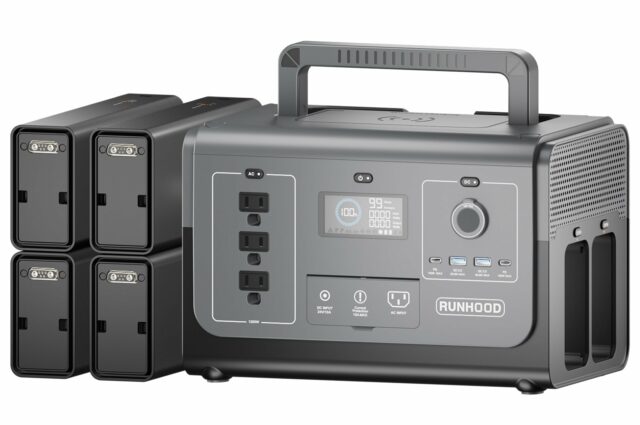
Best For: Modular power needs
Technical Specifications:
-
Capacity: 1,152Wh
-
Battery Type: LiFePO4
-
Output: 1,200W
-
Weight: 28.7 lbs (13 kg)
-
Solar Input: 400W max
Key Features:
-
Hot-Swappable Batteries: Change without powering down
-
Lightweight: Easy to carry
-
Good Ventilation: Cooling fan system
-
Multiple Outputs: Versatile connectivity
-
Durable: Rugged construction
Yoshino B4000 SST
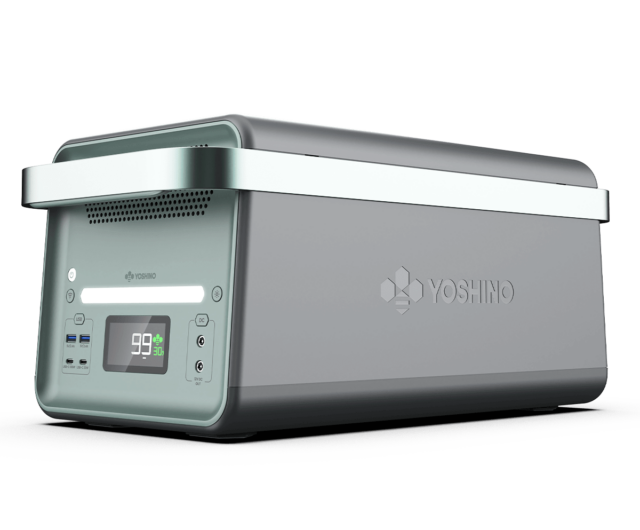
Best For: Heavy-duty power users
Technical Specifications:
-
Capacity: 4,096Wh
-
Battery Type: LiFePO4
-
Output: 3,500W
-
Weight: 99 lbs (45 kg)
-
Solar Input: 1,200W max
Key Features:
-
Massive Capacity: For large setups
-
High Output: Runs power tools
-
Expandable: Up to 8kWh
-
Durable: Industrial-grade components
-
Multiple Charging Options: Fast AC input
ElecHive 2500
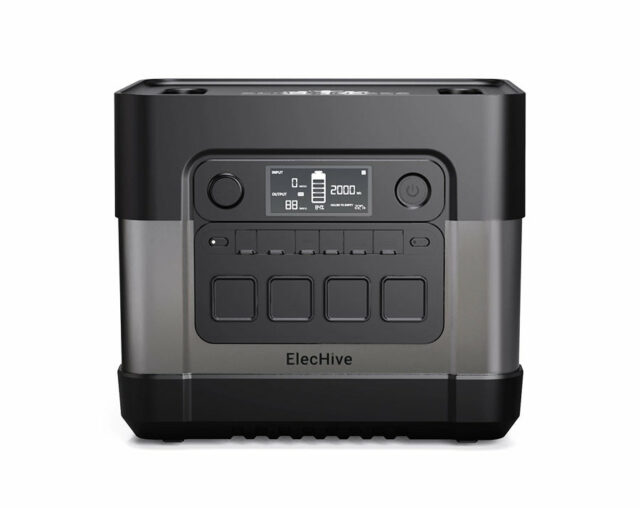
Best For: Professional overlanders
Technical Specifications:
-
Capacity: 2,560Wh
-
Battery Type: LiFePO4
-
Output: 2,500W
-
Weight: 55 lbs (25 kg)
-
Solar Input: 1,000W max
Key Features:
-
Professional-Grade: Commercial quality
-
High Efficiency: 95% energy conversion
-
Advanced BMS: 12-layer protection
-
Fast Charging: 1.5 hours to 80%
-
Dual Inverters: Clean power output
Each of these power stations offers unique advantages for different overlanding scenarios. Consider your specific power needs, budget, and preferred features when making your selection.
How to Use and Maintain a Portable Power Station
A portable power station is a valuable investment for overlanders, and proper usage and maintenance will ensure it delivers reliable power for years. Here’s a detailed guide on how to use and care for your unit.
How to Use a Portable Power Station
1. Charge the Battery Before First Use
-
Initial Charge: Most power stations arrive partially charged, but it’s best to fully charge them before first use.
-
Charging Methods:
-
AC Wall Outlet (Fastest method, usually 4-8 hours)
-
Solar Panels (Ideal for off-grid, depends on sunlight)
-
12V Car Charger (Slower, useful while driving)
-
Gas Generator (Emergency backup)
-
2. Connect Your Devices
-
Check Power Requirements: Ensure your devices don’t exceed the power station’s max output.
-
Use the Right Ports:
-
AC Outlets – For laptops, blenders, CPAP machines
-
USB-A/USB-C – Phones, tablets, cameras
-
12V Carport – Coolers, air compressors
-
Wireless Charging Pad (if available)
-
3. Turn On the Power Station
-
Press the Power Button – Some models have an LCD screen showing battery level and output.
-
Monitor Power Usage – Avoid overloading by checking real-time wattage consumption.
-
Enable Eco Mode (if available) – Redeps power waste when devices are idle.
How to Maintain Your Portable Power Station
1. Charge the Battery Regularly
-
Avoid Deep Discharges – Don’t let the battery drop below 20% too often.
-
Store at 50-80% Charge – If unused for long periods, partial charge prevents battery degradation.
-
Recharge After Heavy Use – Top it up before the next trip.
2. Keep the Battery Cool
-
Avoid Extreme Heat – Don’t leave it in direct sunlight or a hot car.
-
Ensure Proper Ventilation – Keep vents clear when charging/discharging.
-
Winter Storage – If storing in cold temps, keep it indoors when not in use.
3. Use the Correct Charging Equipment
-
Only Use Manufacturer-Approved Chargers – Off-brand adapters can damage the battery.
-
Solar Panel Compatibility – Check voltage and connector type before pairing.
-
Avoid Fast Charging All the Time – Slower charging extends battery lifespan.
4. Follow the Manufacturer’s Instructions
-
Read the Manual – Each model has specific care guidelines.
-
Firmware Updates – Some smart power stations require occasional updates.
-
Warranty Compliance – Improper use may void warranty coverage.
Final Thoughts
A portable power station is an essential tool for overlanders, providing clean, silent, and reliable power wherever your adventures take you. Whether you’re running a fridge, charging gadgets, or powering emergency equipment, choosing the right model and maintaining it properly ensures peak performance for years.
Key Takeaways:
✅ Choose the Right Capacity – Match your power needs with battery size.
✅ Prioritize LiFePO4 for Longevity – More cycles and better heat resistance.
✅ Solar Compatibility is a Game-Changer – Unlimited off-grid power potential.
✅ Regular Maintenance Extends Lifespan – Proper charging and storage matter.
With the right power station and proper care, you’ll never have to worry about running out of power—no matter how remote your journey takes you.
Happy Overlanding! ⚡🌍
Read More: Choosing the Right Rooftop Tent for Your Overlanding Adventures


